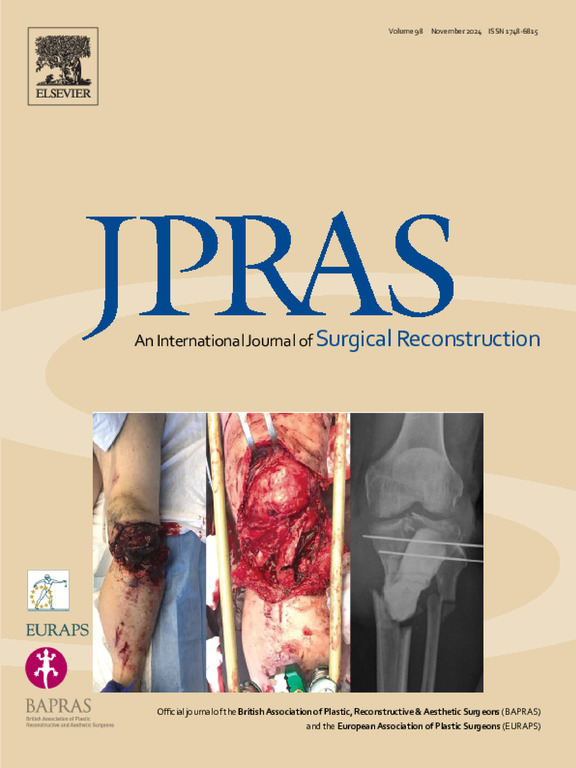Epidemiology and disparities of gender-affirming surgery in the United States
IF 2
3区 医学
Q2 SURGERY
Journal of Plastic Reconstructive and Aesthetic Surgery
Pub Date : 2025-02-14
DOI:10.1016/j.bjps.2025.01.047
引用次数: 0
Abstract
Background
Several advances have been made to increase access to gender-affirming procedures across the country, yet it remains unknown whether these benefits are experienced disproportionately across demographics. The purpose of this study was to investigate the epidemiologic trends of gender-affirming surgery across the country over the past six years, as well as to analyze the racial and ethnic disparities in immediate postoperative complications for patients undergoing gender-affirming surgery nationwide.
Methods
Retrospective cohort study was conducted of gender-affirming procedures performed in the United States between 2015 and 2020 across 719 hospitals participating in the National Surgical Quality Improvement Program. Age at surgery, type of reconstruction, and postoperative complications were compared across demographic groups.
Results
During the study interval, 4491 patients underwent gender-affirming surgery, including 71.1% (n=3221) masculinizing procedures and 28.3% (n=1270) feminizing procedures. Over the last five years, there has been a fourfold increase in gender-affirming surgery, from 299 per million to 1029 per million cases performed in the United States (p<.001). Transmasculine patients were ten years younger than transfeminine patients (p<.001). While masculinizing procedures were the most common across all demographics, Black and Hispanic patients were significantly more likely to undergo feminizing procedures than White patients (p<.001). Black patients were significantly older than White patients at the time of surgery. Black patients were significantly more likely than White patients to experience postoperative surgical complications (p=.039).
Conclusions
Racial and ethnic disparities exist in gender-affirming surgery preference, timing, and postoperative outcomes.
求助全文
约1分钟内获得全文
求助全文
来源期刊
CiteScore
3.10
自引率
11.10%
发文量
578
审稿时长
3.5 months
期刊介绍:
JPRAS An International Journal of Surgical Reconstruction is one of the world''s leading international journals, covering all the reconstructive and aesthetic aspects of plastic surgery.
The journal presents the latest surgical procedures with audit and outcome studies of new and established techniques in plastic surgery including: cleft lip and palate and other heads and neck surgery, hand surgery, lower limb trauma, burns, skin cancer, breast surgery and aesthetic surgery.

 求助内容:
求助内容: 应助结果提醒方式:
应助结果提醒方式:


